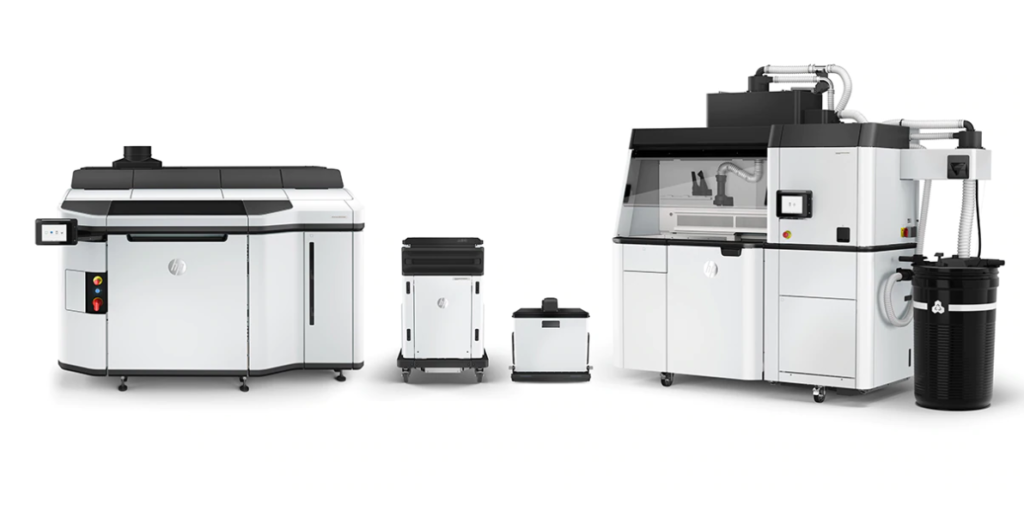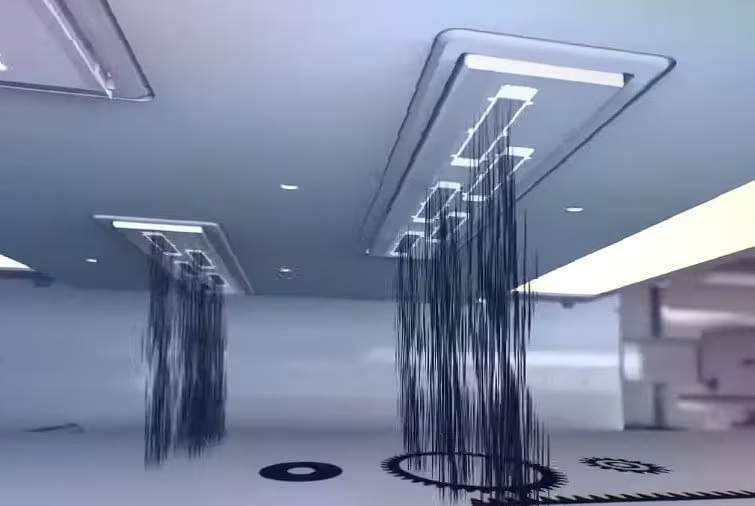Multi Jet Fusion:
A Modern Manufacturing Marvel
In the ever-evolving world of 3D printing, Multi Jet Fusion (MJF) has emerged as a groundbreaking technology, pushing the boundaries of what’s possible in additive manufacturing. Developed by HP, this innovative method is transforming various industries by offering rapid production times, exceptional part quality, and intricate detailing capabilities. But what exactly is MJF, and how does it work? Let’s dive into the specifics of this modern manufacturing marvel.

What is Multi Jet Fusion?
Multi Jet Fusion is an advanced 3D printing technology that utilizes fine nylon powder to construct highly detailed, durable parts. Unlike traditional 3D printing methods such as Fused Deposition Modeling (FDM) or Stereolithography (SLA), which build parts layer by layer through melting materials or curing resins, MJF employs a unique process that fuses powder particles using a combination of an inkjet array and thermal agents.

The stages of MJF 3D printing:
Preparation Stage
Loading the Material: The process begins with loading a bed of fine, polymer-based powder, typically nylon, into the MJF printer.
Layering: A thin layer of the powder is then spread uniformly across the build platform by a roller.
Printing Stage
Agent Application: An array of inkjet nozzles deposits two distinct types of agents across the powder layer. The first is a *fusing agent* applied where the particles are meant to solidify. The second is a *detailing agent* applied around the boundaries of the part to enhance resolution and detail clarity.
Fusing Stage
Energy Application: After the agents are deposited, an infrared light sweeps across the build area. The regions with the fusing agent absorb the infrared energy and coalesce, forming solid layers. In contrast, the areas with the detailing agent remain as powder, providing a stark contrast and fine edges.
Layer Repetition
This process is repeated layer by layer, building the object from the bottom up, spreading a new layer of powder each time, applying agents, and fusing until the entire part is complete.
Cooling Stage
Cooling: After printing, the build chamber needs time to cool to mitigate the risk of warping and to ensure structural integrity. The cooling process is crucial for achieving the best mechanical properties and dimensions.
Post-Processing
Depowdering: Once sufficiently cooled, the finished parts are extracted from the powder bed. Excess powder is removed, often using air blowers, brushes, or vibratory cleaners. This leftover powder can typically be recycled for future prints, making MJF a relatively eco-friendly option.
Optional Finishing
Additional post-processing steps, like dyeing, smoothing, or coating, can be carried out based on the desired aesthetics and application requirements.
Here is a cool video where HP explains MJF technology:
Advantages of Multi Jet Fusion
MJF stands out for its rapid production capabilities, enabling quicker turnaround times compared to other 3D printing methods. The technology produces parts with a smooth finish right out of the printer, reducing the need for extensive post-processing, still, several finishes can be done if you need color or a more aesthetic appearance.
With high resolution and precise detailing, MJF is suitable for creating complex geometries that other 3D printing methods might struggle to produce. It is also one of the most environmentally sustainable solutions, it can reuse the unfused powder contributes to better material utilization, reducing waste and costs.
If what you need is endurance and strength, parts produced using MJF demonstrate excellent mechanical properties, making them ideal for functional prototypes and end-use applications.



Applications of MJF
Multi Jet Fusion’s versatility finds applications across various sectors:
Automotive: For prototyping and producing lightweight, functional components.
Healthcare: Creating custom implants, prosthetics, and medical devices.
Consumer Goods: For manufacturing durable, high-quality end-use products.
Aerospace: Where complex, lightweight parts are critical for performance and efficiency.
Industrial: For producing tools, jigs, and fixtures tailored to specific needs.
In summary, Multi Jet Fusion is revolutionizing 3D printing with its unique approach to building parts, combining speed, precision, and material efficiency. Whether you are a designer, engineer, or manufacturer, understanding and leveraging MJF can open new doors for innovation and productivity in your projects.
For more detailed information on HP Multi Jet Fusion Technology, click here.
If you are interested in our services, please feel free to contact us, we are always happy to help!